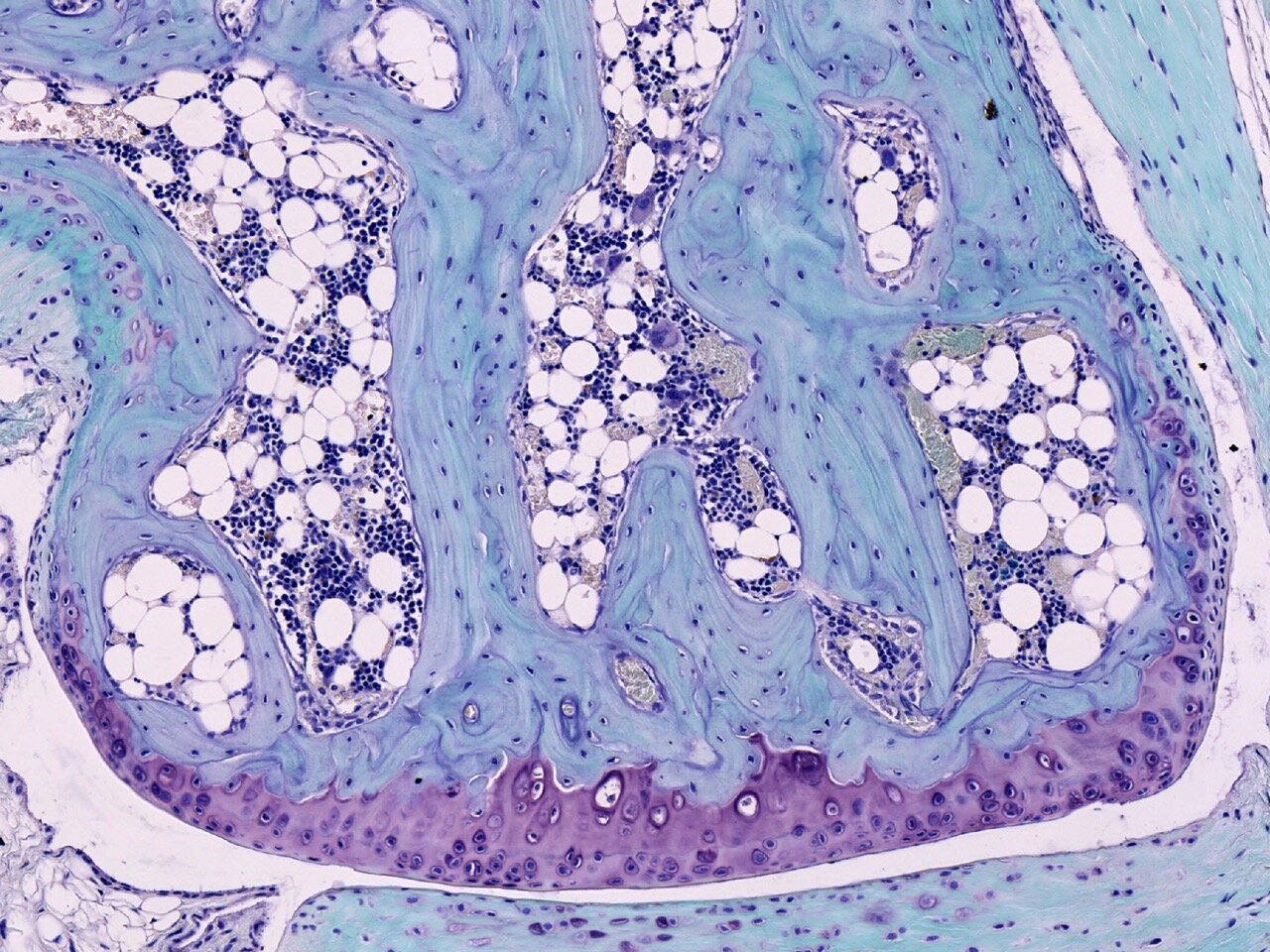Regrowing Cartilage in Mice May Mean Good Things for Arthritis Treatment
Magnified image of the knee joint of a mouse with cartilage along the edge of the joint stained in purple. Image by Kevin Mackenzie via Wikipedia. Licensed under Creative Commons 4.0
Researchers at Stanford have good news for the future of arthritis treatment. In a paper published in Nature Medicine, Stanford professors and visiting researcher Matthew Murphy, PhD discovered a method that resulted in the regrowth of cartilage in mice.
That’s pretty remarkable when you consider up until now, the medical community believed that once cartilage was gone, it was gone for good. Losing this critical layer of tissue between bones is what leads to the pain of arthritis and it can be lost through injury or just plain old age. Most of the treatments we have now involve invasive surgeries like joint replacements or long-term pain management regimens.
Eager to find alternatives, researchers started with a treatment called microfracture—drilling tiny holes in the surface of a joint—that promotes skeletal stem cells within the joint to heal the area by producing new tissue. Left to their own devices, however, the stem cells produce fibrocartilage. It’s more like scar tissue and doesn’t have either the elasticity or the longevity of cartilage—and it’s not very useful in helping with arthritis pain.
Pursuing a hunch, the researchers wondered what would happen if they could steer the stem cells to create cartilage instead of fibrocartilage. Working on lab mice with various stages of arthritis, they used the microfracture treatment, but then applied two powerful molecules. The first was a morphogenetic protein, already used by doctors to help patient’s bones heal. This protein told the stem cells to start producing bone tissue.
But why did they want to produce bone tissue when they were looking for cartilage?
Because cells destined to become bone cells first go through a cartilage stage. The key was stopping the cells when they hit that stage. For that, they applied a second molecule called VEGF, which was able to block the signals that led to bone formation and stop the cells in their tracks. The result was cartilage with the function and properties similar to natural cartilage. As for the mice, their mobility was restored and pain was significantly reduced.
The treatment isn’t quite ready to roll out to humans. The researchers said they’d need to test the method on larger animals, then start human clinical trials. But if all goes well, we may see a time when people avoid the pain of arthritis with a treatment that actually helps the body regrow cartilage before arthritis even starts.

